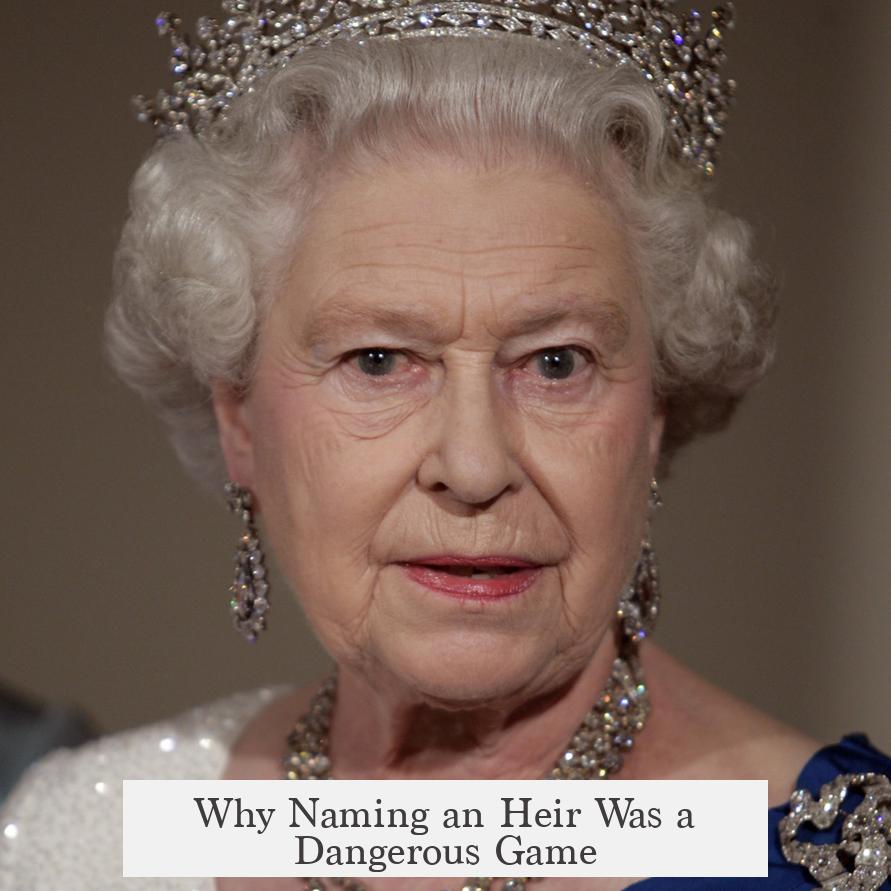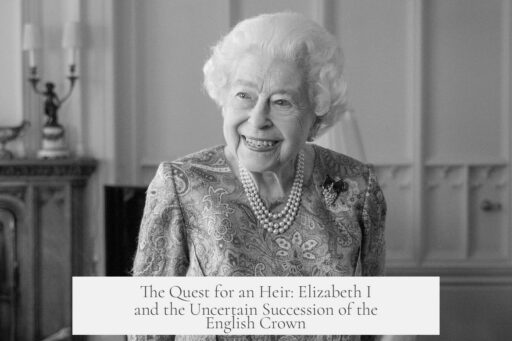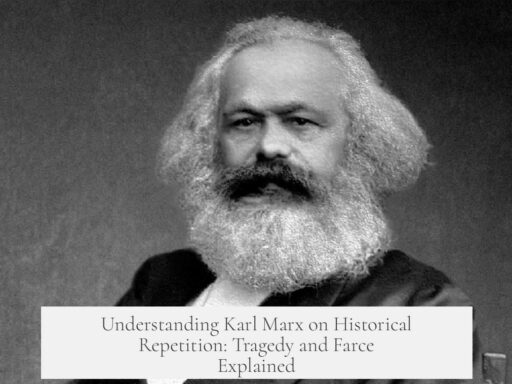Elizabeth I did not name an heir due to political, religious, and security concerns, leading to a complex succession resolved by Robert Cecil securing the throne for James VI of Scotland, a Protestant and the closest legitimate claimant.
Elizabeth I avoided naming a direct heir to prevent political instability and plots against her. Naming an heir risked providing opponents a figurehead to rally around and could spark rebellion. This was especially sensitive considering the religious tensions between Catholics and Protestants during her reign.
One major issue was the Catholic threat. Elizabeth did not want a Catholic monarch, such as Mary, Queen of Scots, to succeed her. Catholics inside and outside England supported Mary’s claim because a Catholic monarch promised a return to Catholic rule and religious unity for them. However, England was divided; Catholic factions themselves were often in conflict, and the government feared Catholic conspiracies.
Religious unity was tied closely to political stability. The monarch was expected to protect the nation’s spirituality and maintain religious conformity. Successions under Henry VIII, Edward VI, Mary I, and Elizabeth showed how changes at the throne led to religious upheaval. Elizabeth’s decision not to name an heir helped avoid providing a rallying point during these fragile times.
Several claimants had potential rights to the throne. James VI of Scotland, son of Mary, Queen of Scots, had a strong hereditary claim as a descendant of Margaret Tudor. Other claimants descended from Mary Tudor through her daughters Frances and Eleanor also had blood claims, known as the Greys and Cliffords. Thomas Wilson’s 1600 work listed twelve competitors aiming for the throne, showing the complexity of succession claims.
The legality of succession also balanced hereditary right and parliamentary consent. In 1603, Parliament declared James VI the lawful king, which revealed evolving ideas about the source of royal authority. Parliament’s endorsement suggested that inheritance alone might not be enough without parliamentary approval.
Henry VIII’s will and Edward VI’s “Device for the Succession” complicated the matter further. Henry VIII tried to exclude descendants of Margaret Tudor and favored his own children and their heirs. Edward VI’s document went even further, excluding his sisters, reinforcing the unstable nature of claims to the throne.
The risks surrounding naming an heir included vulnerability to assassination and worsening religious conflict. Elizabeth personally opposed a Catholic successor and many Protestants agreed. Mary, Queen of Scots, being Catholic and raised in a French Catholic court, symbolized the threat of restoring Catholic dominance.
James VI’s Protestant upbringing was crucial in securing his claim. He represented a compromise, maintaining Protestant rule and avoiding the religious strife feared by Elizabeth. Because Elizabeth left no formal successor, Robert Cecil, a key minister, worked behind the scenes to place James VI on the English throne, uniting Scotland and England under one monarch in 1603.
| Key Points | Details |
|---|---|
| Elizabeth’s Avoidance | No declared heir to avoid plots, rebellion, and religious conflict |
| Catholic Threat | Mary, Queen of Scots, and Catholic factions posed political and religious dangers |
| Succession Claims | James VI (Protestant), Greys, Cliffords, and others with Tudor descent |
| Parliament’s Role | Declared James lawful king, highlighting parliamentary consent in succession |
| Robert Cecil | Orchestrated James’s succession to secure political stability |
- Elizabeth avoided naming an heir to prevent political unrest and assassination.
- Religious tensions shaped fears of Catholic succession through Mary, Queen of Scots.
- Multiple claimants with Tudor blood complicated the line of succession.
- Parliament played a role in endorsing James VI as the legitimate monarch.
- James VI’s Protestant upbringing made him the preferred and final successor.
An Heir for Elizabeth I: The Crown Without a Clear Successor

Elizabeth I famously died without naming an heir. This wasn’t a careless oversight or royal laziness. Instead, it was a strategic decision shaped by politics, religion, and sheer survival instincts. But why did the Virgin Queen keep everyone guessing about the next ruler of England? Let’s dive into the tangled web of succession drama during her reign and discover the high stakes involved.
Elizabeth’s refusal to name an heir wasn’t just about keeping us historians on our toes. One major reason was avoiding plots against her. Naming an heir could have turned that person into a powerful figurehead for dissenters. A rival claimant might rally rebellious factions, weakening Elizabeth’s grip on power. Talk about playing royal chess with people’s lives!
And then, there was the thorny issue of religion, a constant headache for the Tudor and Stuart monarchs. Elizabeth firmly rejected the idea of a Catholic successor, particularly Mary, Queen of Scots. Mary’s Catholic faith symbolized everything Elizabeth feared: religious upheaval that could plunge England into chaos once more.
Religious unity was paramount for Elizabeth and her advisors. The monarch’s role wasn’t limited to ruling land and laws—it extended to protecting the nation’s spirituality. Having the monarch and the majority of subjects share the same religion seemed essential to maintain peace. Given the constant flip-flop between Protestant and Catholic monarchs—Henry VIII, Edward VI, Mary I, and Elizabeth herself—any succession stirred anxiety about which way the religious pendulum would swing next.
Throughout Elizabeth’s reign, Catholic conspiracies lurked in the shadows. Both in England and abroad, Catholic factions eyed the throne with hope and hunger. Notably, these factions weren’t united. The secular priests and Jesuits frequently clashed, undermining their cause even from within. Still, the threat of a Catholic takeover was real enough that Elizabeth’s government increasingly persecuted Catholics towards the end of her rule. They feared an assassination or uprising aimed at replacing Elizabeth with a Catholic monarch.
The Royal Puzzle: Who Had the Best Claim?
Since Elizabeth didn’t outline an heir, others stepped up to figure out the succession. Robert Cecil, one of her most trusted ministers, quietly secured the throne for James VI of Scotland—Mary, Queen of Scots’ son. James had a strong hereditary claim, being a descendant of Margaret Tudor, Henry VIII’s sister. But things weren’t cut-and-dry.
In 1603, Parliament had to explicitly declare that James inherited the throne “by inherent birthright and lawful and undoubted succession.” This tells us something vital: by then, succession wasn’t solely about bloodlines but also about parliamentary approval. The monarchy’s divine right was increasingly subject to political validation.
The political theorist and diplomat Thomas Wilson highlighted just how fierce the competition was in his 1600 work, The State of England Anno Dom. He described “12 competitors” eager to inherit Elizabeth’s throne. Candidates traced back to descendants of both Margaret Tudor and Mary Tudor, Henry VIII’s sisters. Among them were the Greys and Cliffords, who had claims based on Henry’s assigned order of succession. But ultimately, the Stuarts from Margaret Tudor’s line—the Scottish royal family—had the strongest blood claim.
Why Naming an Heir Was a Dangerous Game

No wonder Elizabeth stayed silent about her successor. Naming an heir made her vulnerable to assassination, as conspirators could target the heir to decapitate the Tudor line. She personally opposed a Catholic heir, and so did many of her Protestant subjects who remembered the horrors of religious wars. Mary, Queen of Scots embodied that Catholic threat. Her French Catholic upbringing clashed sharply with Elizabeth’s Protestant England, fueling distrust.
Historically, Henry VIII’s will excluded Margaret Tudor’s descendants (the Stuarts) from the succession. He prioritized his son Edward VI and, failing him, his daughters Mary and Elizabeth, before turning to Mary Tudor’s descendants through Frances and Eleanor. Even Edward VI’s “Device for the Succession” attempted to bypass his sisters completely. This reflected his view that Mary and Elizabeth were illegitimate heirs. But political realities evolved beyond Henry’s intentions.
How James Stuart Seized the Throne
The answer to the succession dilemma came down to trust and pragmatism. James VI of Scotland was raised Protestant, easing fears that he might ignite religious conflict if crowned King of England. This helped persuade Elizabeth’s advisors and Parliament to accept him.
Robert Cecil played a pivotal role in ensuring a smooth transition. Without Elizabeth’s declaration, Cecil coordinated the delicate political maneuvers and negotiations that guaranteed James’s peaceful ascension in 1603. This prevented potential civil war and major unrest. The throne passed to the Stuarts with surprising grace, given the simmering tensions.
Final Thoughts: The Legacy of a Queen Without an Heir
Elizabeth I’s refusal to name an heir kept England on tenterhooks for years. She balanced fears of rebellion, religious upheaval, and personal mistrust in Catholic claimants by deliberately leaving the question unresolved. This approach protected her reign but planted seeds for political evolution. By the time James VI took the throne, succession was no longer purely a matter of inheritance. Parliamentary consent and national stability mattered just as much.
What if Elizabeth had named Mary, Queen of Scots, or any Catholic heir? Would England have plunged into renewed religious wars? She may never have been able to rule as long or as peacefully. Elizabeth’s silent gamble to leave no heir was risky but arguably crucial for the unique Elizabethan era’s lasting peace.
So, the next time someone brushes off Elizabeth’s refusal to name an heir as mere caprice, remember—it was a savvy political move shaped by a complex world of religious fears, competing claims, and the ruthless realities of power struggles. The crown eventually passed—peacefully, no less—not because Elizabeth named a successor, but because of men like Robert Cecil who quietly shaped the future behind the scenes.
Feeling inspired? Imagine the pressure of sitting on the throne, knowing your death will spark a royal frenzy. How would you handle naming your heir—or not? Elizabeth’s legacy teaches us that sometimes, silence speaks louder than any royal decree.




